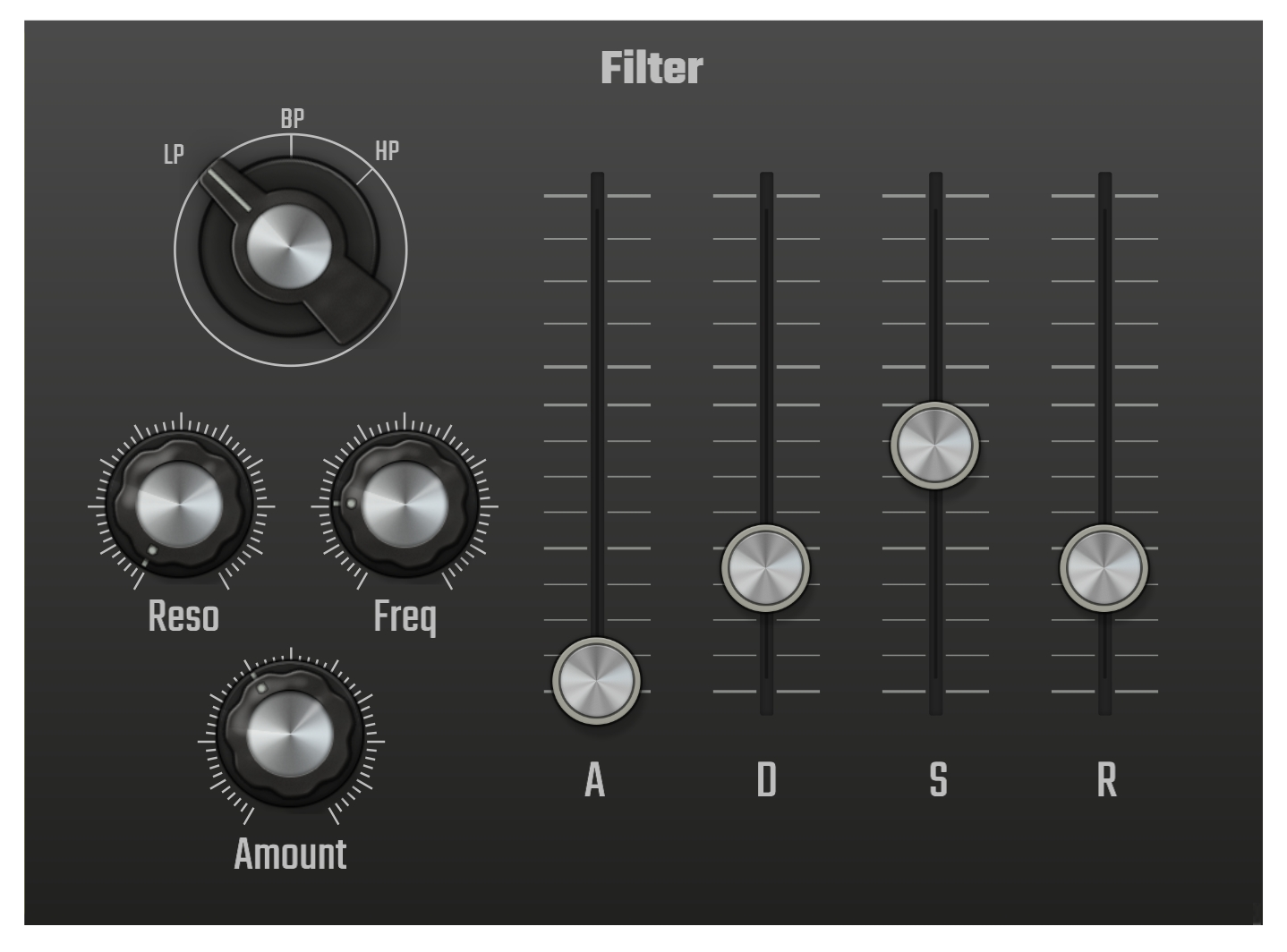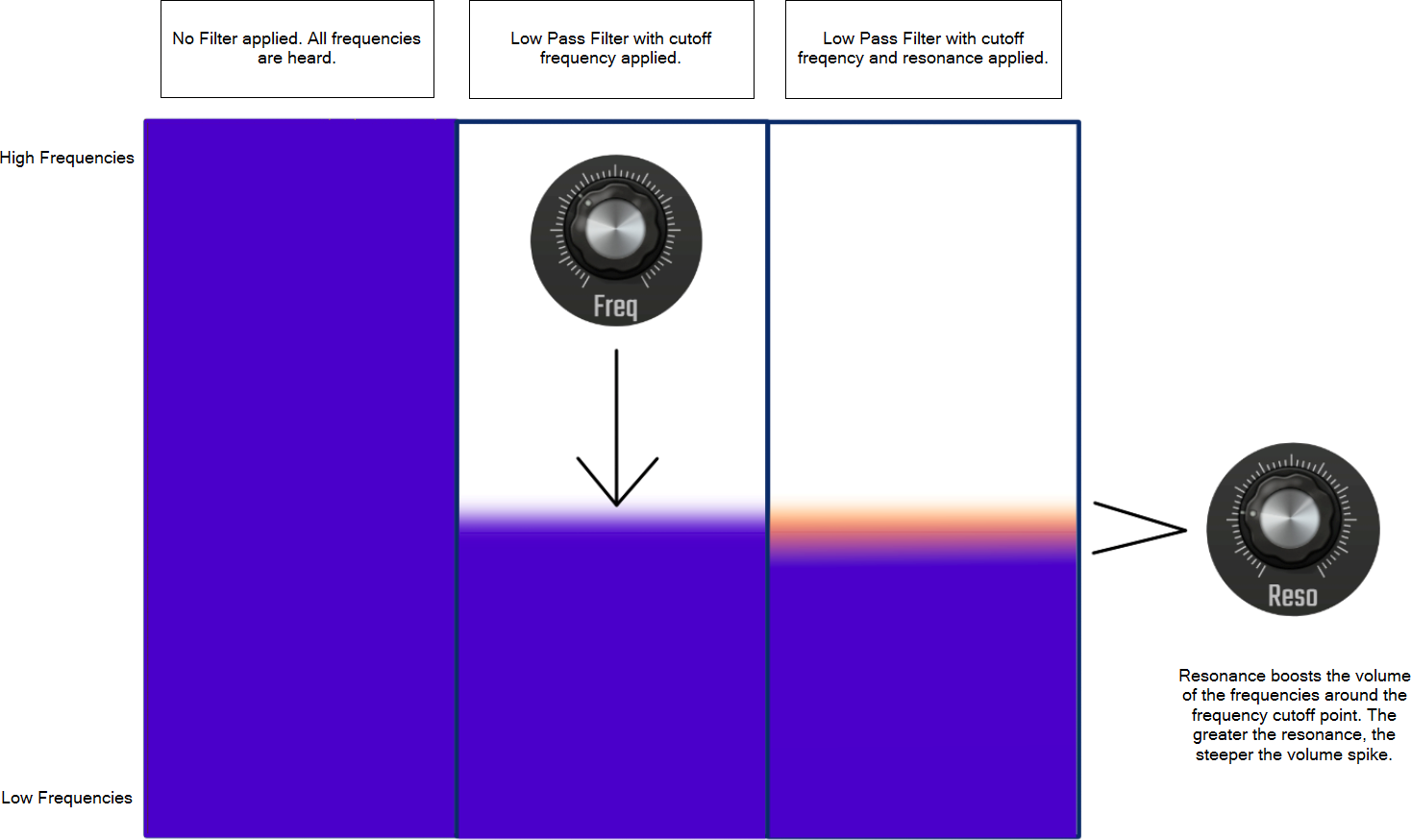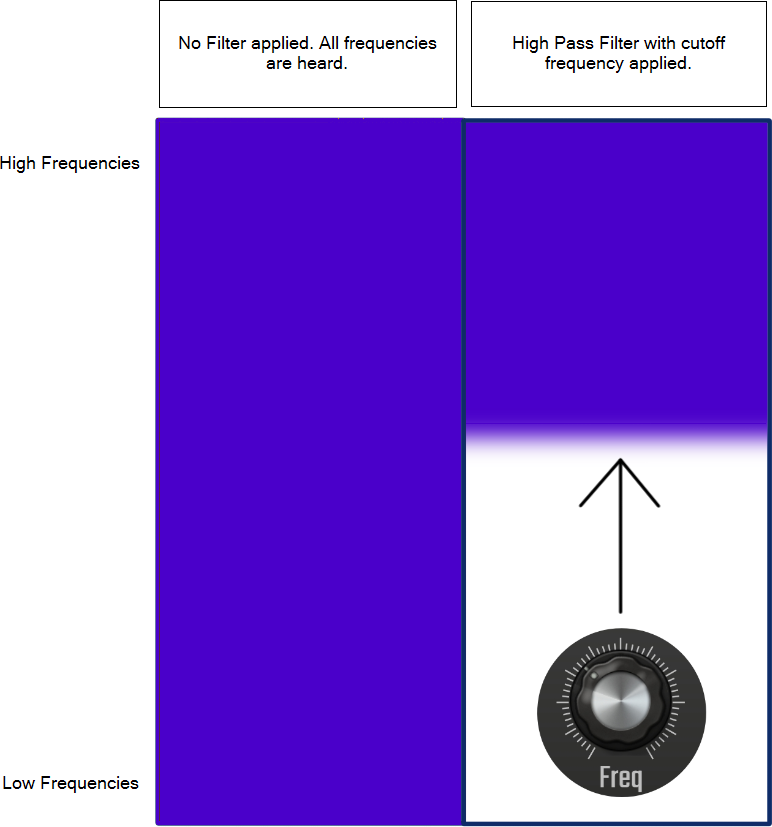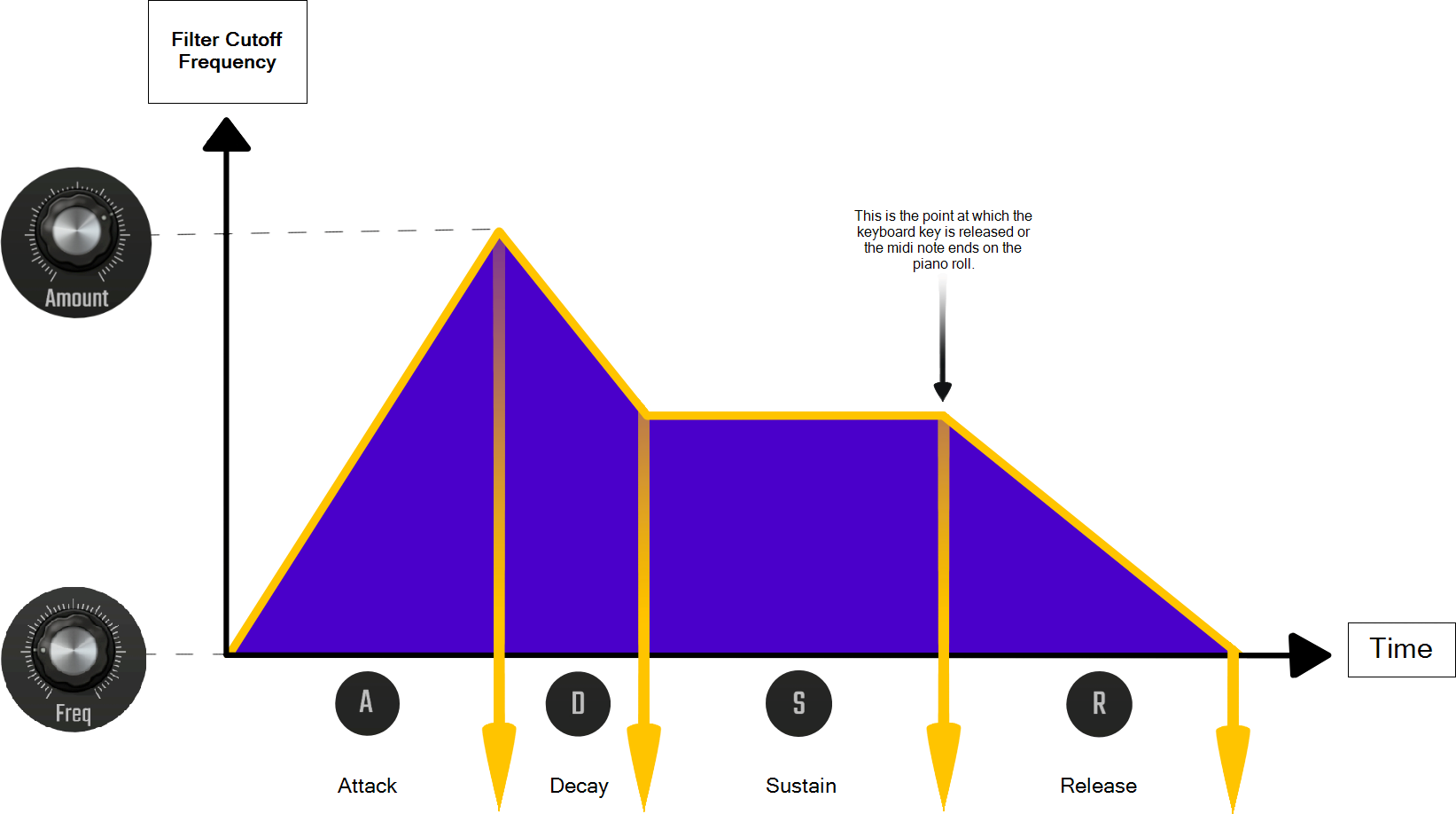The Filter

The Filter section of the Envelope page allows you to filter out frequencies from your synth sound and also has its own Filter Envelope to control how the Filter effects the sound's frequencies over time.
Evolution One has three types of Filter which can be selected using the dial at the top left of the interface. A Low Pass Filter (LP), a High Pass Filter (HP) and a Band Pass Filter (BP).
Use these quick links to jump to a section.
The Low Pass Filter

A Low Pass Filter lets the low frequencies pass through to be heard whilst cutting off the higher frequencies as can be seen in the diagram above. The Cutoff Frequency, which defines the point from which only the lower frequencies are heard, is set using the Frequency dial. When it's all the way to the right it is letting all of the frequencies through and the filter is having no effect. The more it is turned anticlockwise, the more frequencies are cut away until only the very lowest ones can pass through and be heard on the far left hand side.
The Low Pass Filter also has a dial to control the Resonance. Increasing the Resonance causes the Filter to boost the volume of the frequencies around the Cutoff Frequency point. The higher the Resonance level, the more pronounced this volume spike is.
The High Pass Filter

A High Pass Filter is the opposite of the Low Pass Filter. It lets the high frequencies pass through to be heard whilst cutting off the lower frequencies. The Cutoff Frequency, which defines the point from which only the highest frequencies are heard is, once again, set using the Frequency dial. This time, when the dial is all of the way to the left it is letting all of the frequencies through and the filter is having no effect. The more it is turned clockwise, the more frequencies are cut away until only the very highest pass through on the right hand side, though they will probably be out of human hearing range by then! The High Pass Filter in Evolution One doesn't have a Resonance control.
The Band Pass Filter

The last type of filter in Evolution One is the Band Pass Filter. This can be thought of as applying a Low Pass Filter and a High Pass Filter at the same time, meaning only the band of frequencies between them pass through to be heard. As shown in the diagram above, you use the Center dial to position the Band Pass Filter at your desired point within the frequency range. The Width dial allows you to increase, or decrease, the width of the Band Pass Filter so that it lets more, or fewer, frequencies through to be heard.
The Filter Envelope
All of the filters can be used to sculpt the sound by themselves but Evolution One also provides a Filter Envelope to control how the filters effect the frequencies of the sound over time. If this isn't required for your sound, just keep the Amount dial turned off, all the way to the left.
The Filter Envelope is, once again, an ADSR Envelope. Here is a diagram to help explain what the Filter Envelope does, in this example using the Low Pass Filter.

As can be seen, your Cutoff Frequency dial setting can be regarded as the lowest cutoff point.
The Amount dial defines how much the cutoff will move from this lowest point as it passes through the Filter Envelope. Thus, you can regard the Amount dial as highest cutoff point as shown on the diagram.
The Attack phase defines how long it takes for the transition from the lowest cutoff point to the highest cutoff point.
The Sustain defines the cutoff point the Filter will settle upon as long as the note is played long enough and so the Decay defines how long it will take for the Filter to move from the highest point to the Sustain Level.
The Release defines how long it takes for the Filter to return to the lowest cutoff point (as defined by the Cutoff Frequency dial) once the keyboard key is released or the midi note event ends on the piano roll.
NOTE. Don't forget that the Filter Envelope is happening at the same time as the Volume Envelope. So, if your Filter Envelope has a long release time, for example, it won't be heard having any effect if the Volume Envelope has a very quick release time or no release at all.